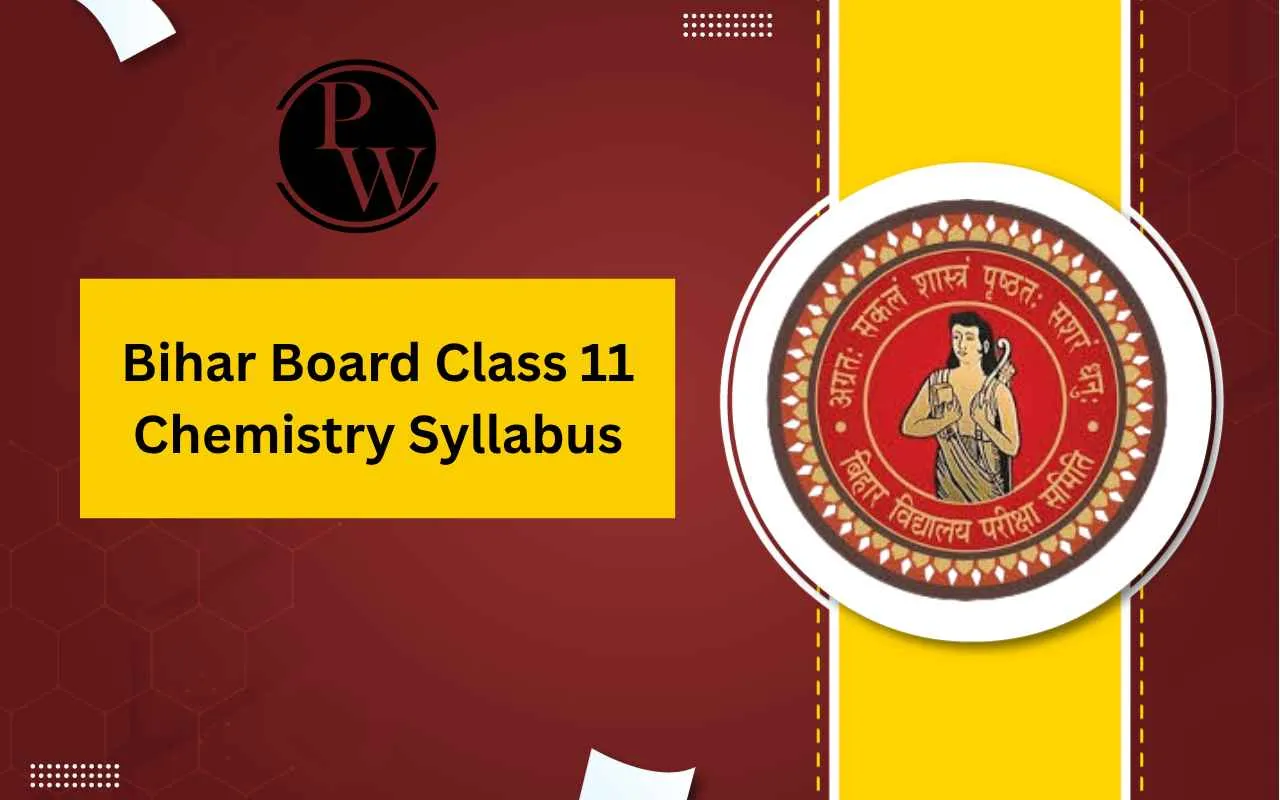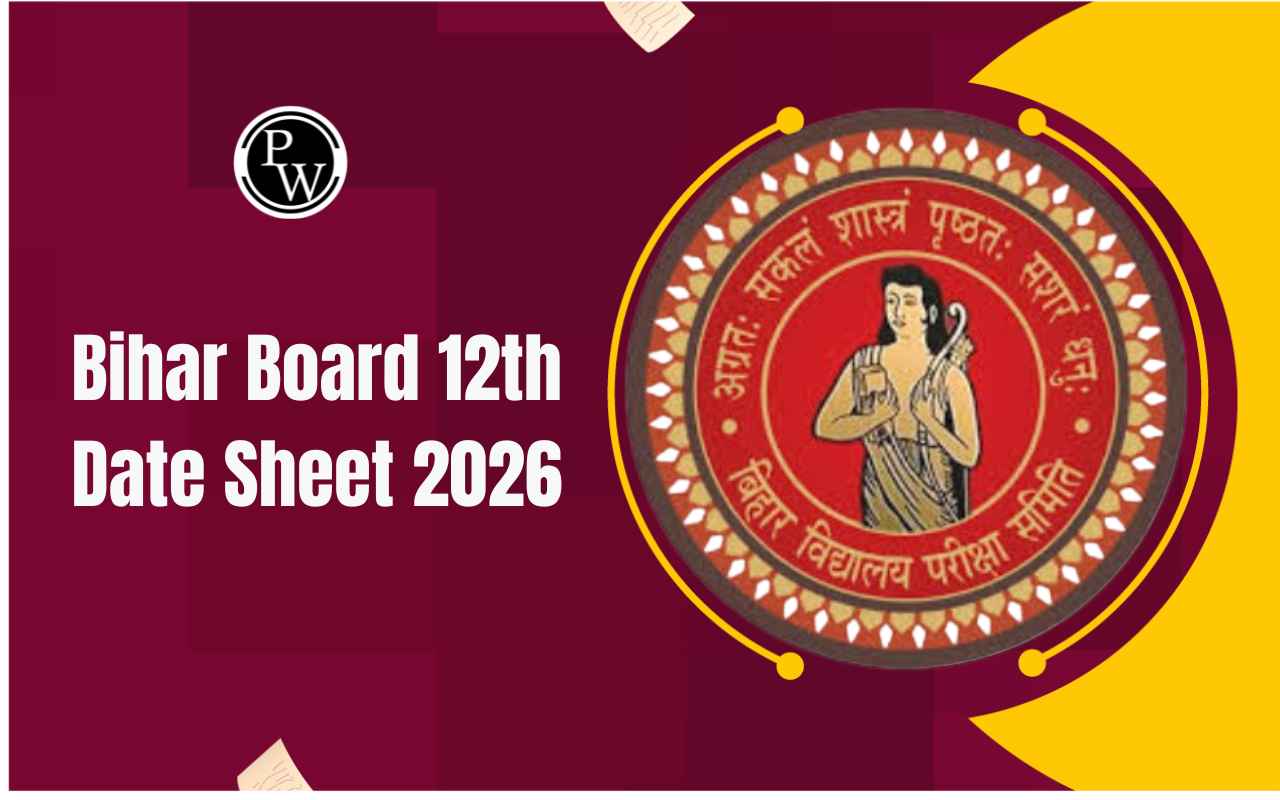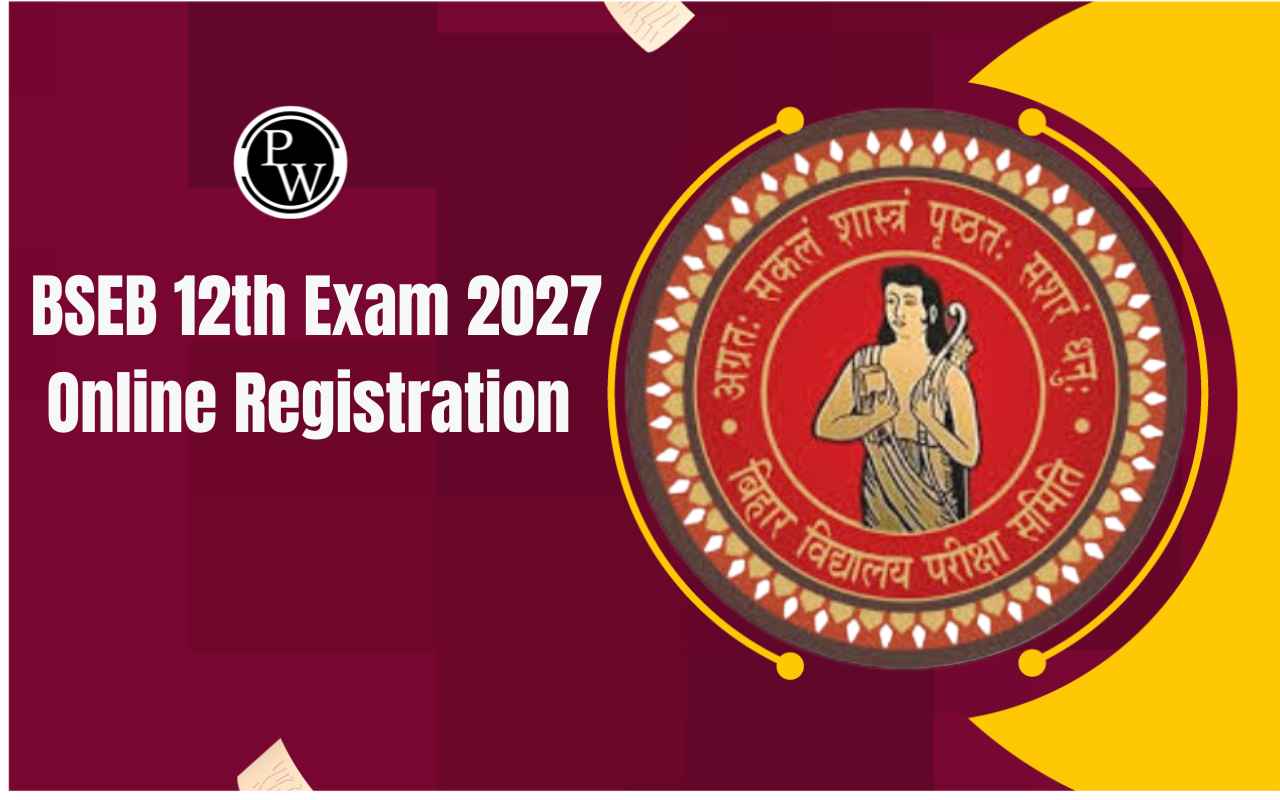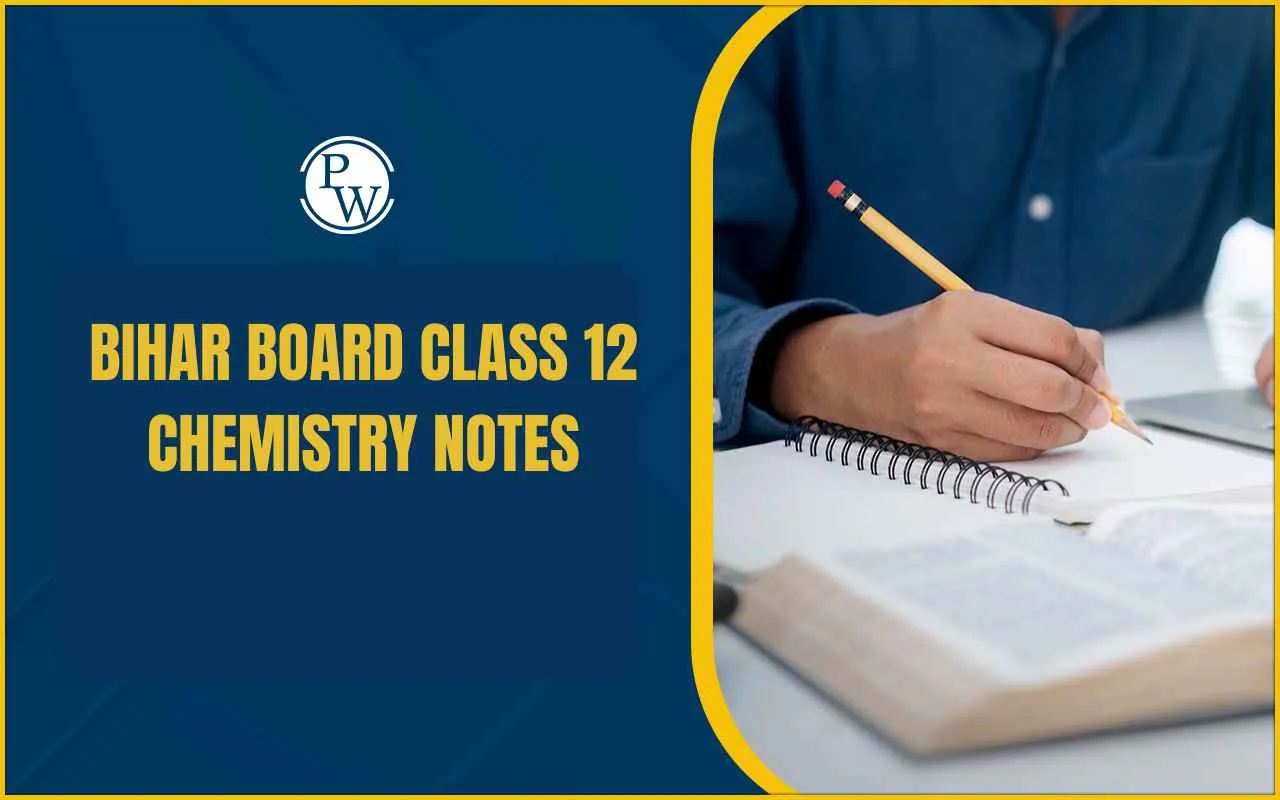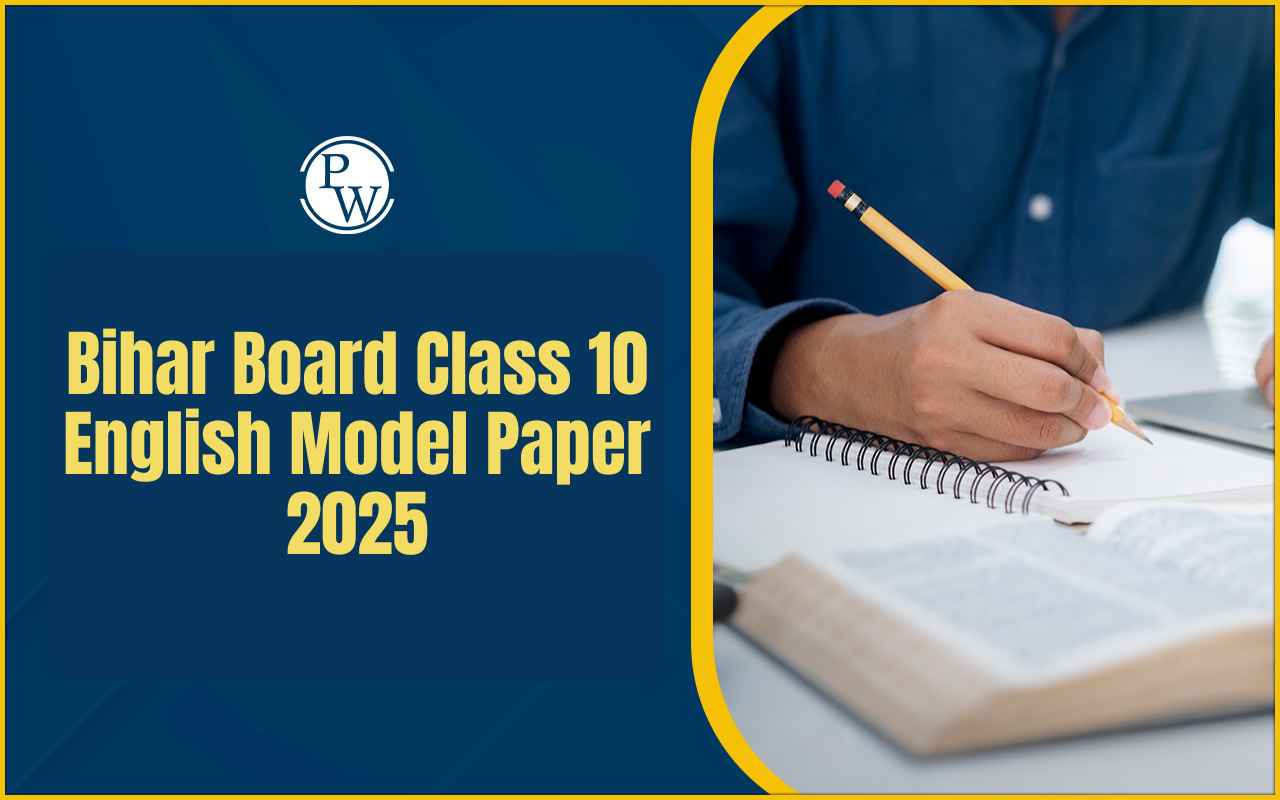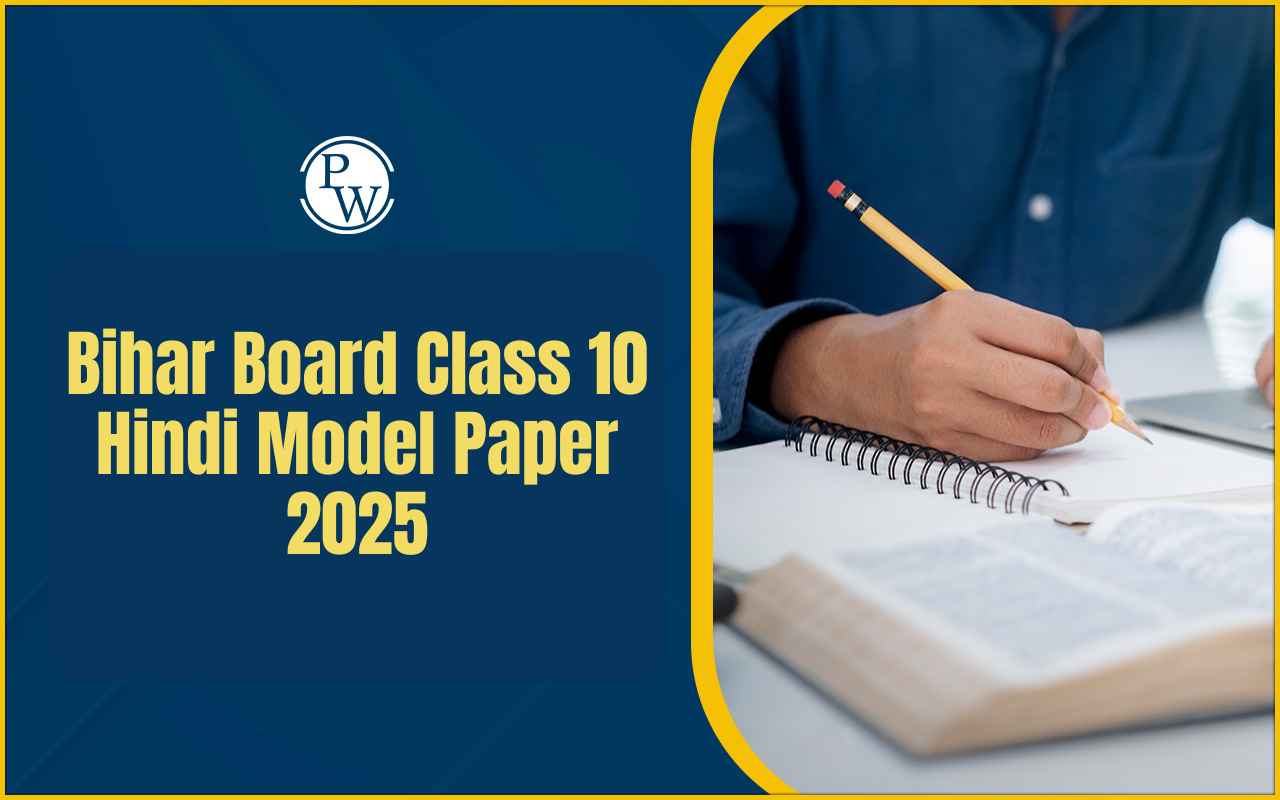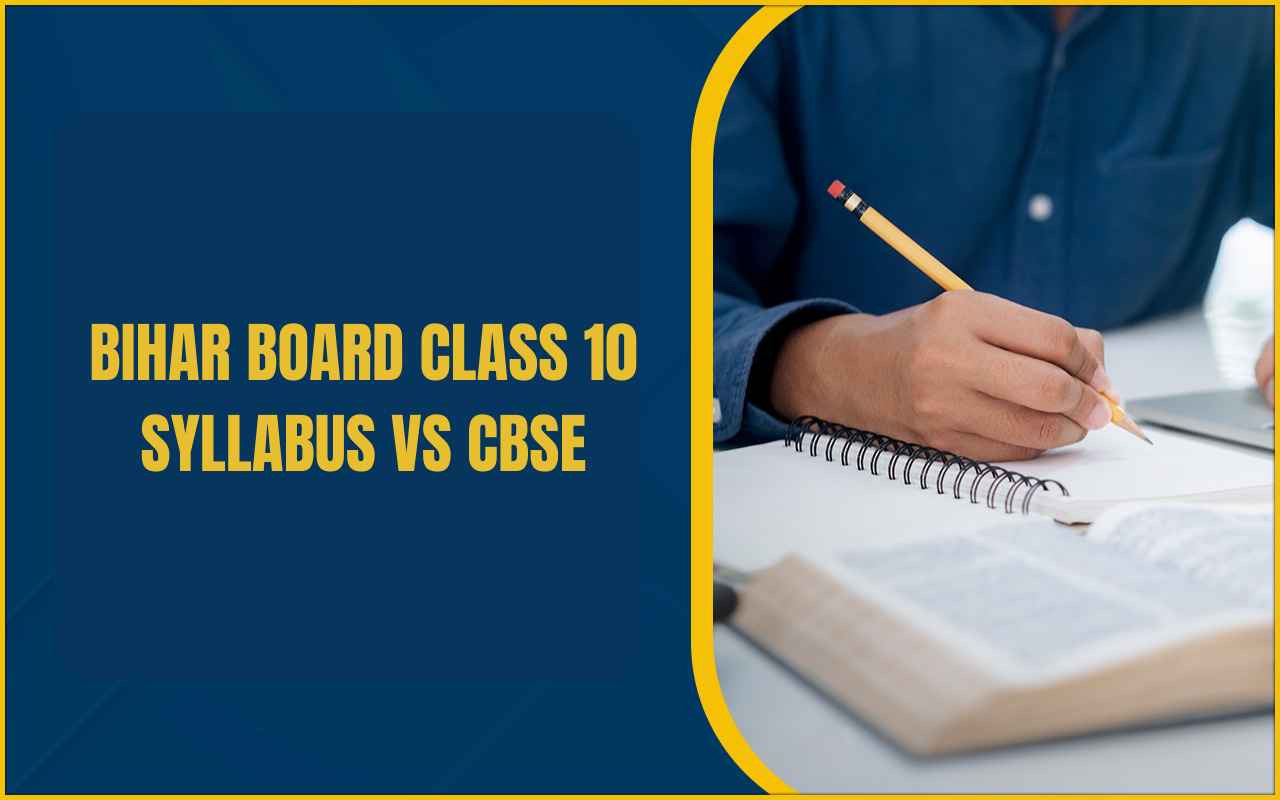
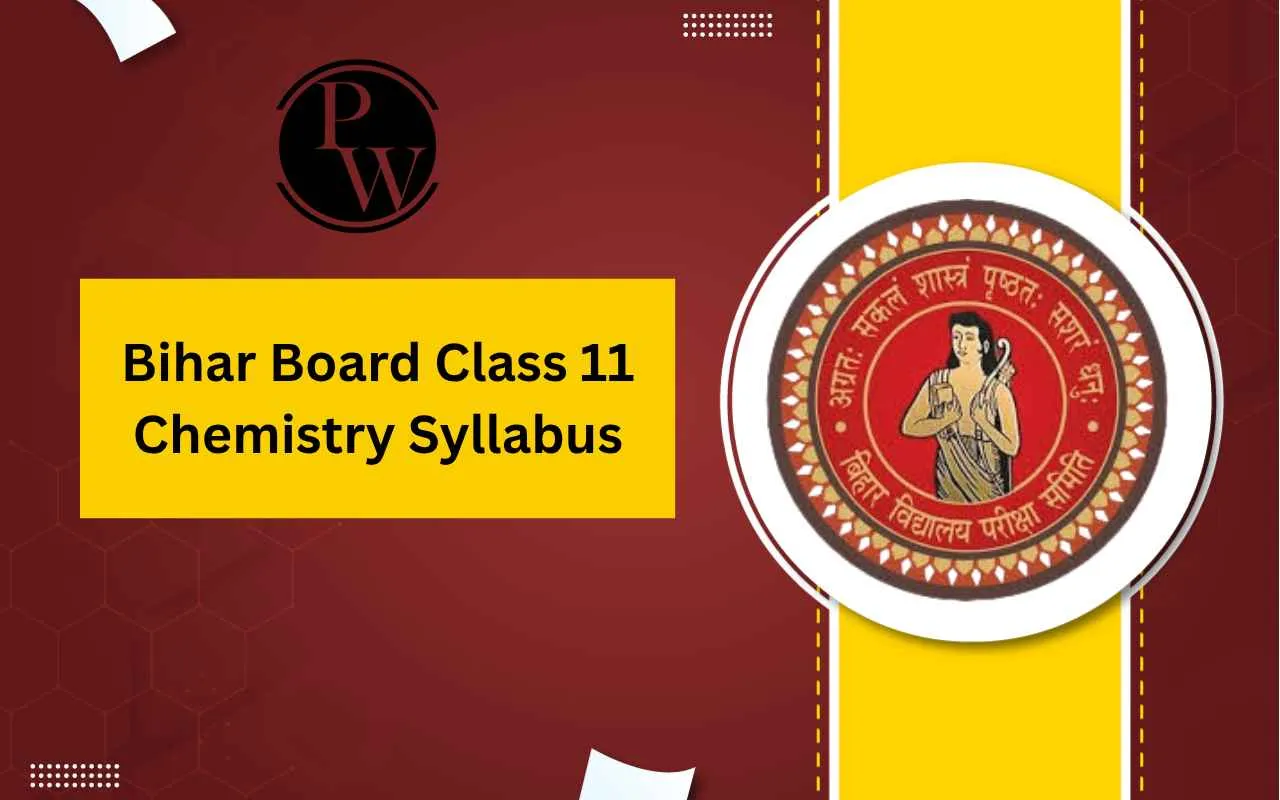
Bihar Board Class 11 Chemistry Syllabus 2025-26: The Bihar Board introduced the combined syllabus for Class XI and XII 2025-26 session to help students learn about the exam pattern, the marking scheme, and the units included in the syllabus.
The Bihar Board examination syllabus also includes the main objectives behind including Chemistry subject in the syllabus. The Bihar board aims to promote a basic understanding of the concepts of Chemistry and focuses on developing an interest in the subject as a separate discipline.
Students aiming to prepare for competitive exams like JEE and NEET must be aware of the syllabus and prepare accordingly to set a strong foundation of the subject.
Bihar Board Class 11 Maths Syllabus
Bihar Board Class 11 Chemistry Syllabus 2026
Bihar Board Class 11 Chemistry Syllabus 2026 focuses on the development of conceptual understanding through practical application. It helps students analyze the concepts and helps them develop interest in the subject. Here’s an overview of the syllabus:
|
Bihar Board Class 11 Chemistry Syllabus 2026 |
|
|
Board Name |
Bihar School Examination Board |
|
Class |
11th |
|
Academic Year |
2025-26 |
|
Mode of Examination |
Offline Mode |
|
Total Marks |
100 |
|
Time duration |
3 hours (Written Exam) |
|
Language |
Hindi and English |
|
Official Website |
|
Bihar Board Class 11 Physics Syllabus
Bihar Board Class 11 Chemistry Syllabus 2026 Marking Scheme
Bihar Board Class 11 Chemistry Syllabus 2026 is given in both Hindi and English to help students understand the syllabus without any confusion. It gives a clear explanation of the sub topics and the units included in the syllabus.
The marking scheme is given for each unit. It helps the students to analyze and prioritize the scoring units like Organic Chemistry and Hydrocarbons. The written exam will be conducted of 70 marks and students need to attempt practical/experiments for the remaining 30 marks. Here is the Bihar Board Class 11 Chemistry Syllabus 2026 Marking Scheme:
|
Bihar Board Class 11 Chemistry Syllabus 2026 Marking Scheme |
||
|
Unit No. |
Unit Name |
Marks |
|
I |
Some Basic Concepts of Chemistry |
03 |
|
II |
Structure of Atom |
05 |
|
III |
Radioactivity |
03 |
|
IV |
Classification of Elements and Periodicity in Properties |
04 |
|
V |
Chemical Bonding and Molecular Structure |
05 |
|
VI |
States of Matter: Gases and Liquids |
04 |
|
VII |
Thermodynamics |
05 |
|
VIII |
Equilibrium |
05 |
|
IX |
Redox Reactions |
03 |
|
X |
Hydrogen |
03 |
|
XI |
S-Block Elements |
05 |
|
XII |
Some P-Block Elements |
07 |
|
XIII |
Organic Chemistry: Basic Principles and Techniques |
07 |
|
XIV |
Hydrocarbons |
08 |
|
XV |
Environmental Chemistry |
03 |
|
|
Total |
70 |
Bihar Board Class 11 Chemistry Syllabus 2026 PDF Download
The Bihar Board syllabus allows students to focus on important aspects of Chemistry and understand the basic concepts to score well in the exams. Units carrying higher marks must be prioritized. To know the high-weightage units and the sub topics included in it, downloading the syllabus PDF becomes essential. The Bihar Board Class 11 Chemistry Syllabus 2026 PDF is given here:
Bihar Board Class 11 Chemistry Syllabus 2026
Bihar Board Class 11 Chemistry Syllabus 2026 Practical Assessment
The Practical section carries 30 marks and a list of experiments/ projects are mentioned in the syllabus 2025. Experiments like Test for Organic Compounds and Basic Laboratory Techniques; projects like methods of purification of water and determining the percentage purity of Bazar Sods are included in the syllabus.
Here are the details about the Bihar Board Class 11th Syllabus for Chemistry 2026 Practical Assessment:
|
Bihar Board Class 11 Chemistry Syllabus 2026 Practical Assessment |
|
|
Section |
Details |
|
1. Basic Laboratory Techniques |
1. Cutting glass tube & glass rod 2. Bending a glass tube 3. Boring a cork 4. Study of flame 5. Detection of elements like Na, K, Ca, Ba on the basis of flame test |
|
2. Test for Organic Compounds |
Ethanol, Glycerol, Acetone, Acetate, Formate and Glucose |
|
3. Characterization and Purification of Chemical Substance |
Crystallization involving impure sample of any one of the following: Alum, copper sulphate, Benzoic acid |
|
4. Qualitative Analysis (Dry test and wet test for one anion and one cation in a salt) |
Cations: Pb²⁺, Cu²⁺, As³⁺, Fe³⁺, Mn²⁺, NH₄⁺, CO²⁺, Ca²⁺, Ba²⁺, Mg²⁺ Anions: CO₃²⁻, S²⁻, SO₃²⁻, SO₄²⁻, NO₂⁻, NO₃⁻, Br⁻, Cl⁻, I⁻ |
|
5. Quantitative Estimation |
(i) Preparation of standard solution of Sodium carbonate oxalic acid. (ii) Preparation of N/10 and NaOH and N/10 HCl solution from benz solution. (iii) Determination of strength of a given volume of sodium hydroxide by titrating it against standard solution of oxalic acid. (iv) Determination of strength of a given solution of hydrochloric acid by titrating it against standard sodium carbonate solution. |
|
6. Experiments related to pH change |
- Determination and comparison of pH of four solutions (like fruit and vegetables juices, tea etc.) using pH paper or litmus paper. - Know the pH of solutions of acid and weak base and of two and study of pH change by common-ion effect |
|
Projects |
|
|
1. Checking the bacterial contamination in drinking water by testing sulphide ions. 2. Methods of purification of water. 3. Testing the hardness, presence of iron, chloride etc. depending upon the regional variation in drinking water and the possible causes leading to variation. 4. Investigation of the foaming capacity of different washing soaps and the effect of addition of sodium carbonate on it. 5. Study the acidity of different samples of tea, coffee, lemon and kerosene oil. 6. Determination of the rate of evaporation of different liquids. 7. To study the effect of acids and bases on the tensile strength of fibers. 8. Determine the contents of cold drinks like glucose, sugar, juice, lemon juice cucumber juice etc. 9. To detect the presence of adulterants in food items. 10. Detect the presence of acid in a sample of milk. 11. Determine the amount of Phosphoric acid in soft drink like coca cola, pepsi, lime etc. 12. Find pH of the soil of your school garden and near your surroundings. 13. Study the sweetening effect of different artificial sweetening agents. |
|
Bihar Board Class 11 Biology Syllabus
Bihar Board Class 11 Chemistry Syllabus 2026 Preparation Tips
-
Students must stick to the BSEB syllabus guidelines to avoid confusion. It includes all the chapters from which questions will appear in the exam.
-
The first chapter holds important significance as it includes the basic terms of Chemistry. Students should begin with the first chapter ‘Some Basic Concepts of Chemistry’ to understand the basic terms like atomic mass, chemical formula, and mole.
-
The practical exam also holds importance to achieve an overall good score. A good performance in Class 11 practicals not only helps in scoring well but also helps students to understand logic behind every equation.
-
It is important to know the short tricks and the important formulas by heart. Students must write all the tricks and important formulas, especially for Physical Chemistry (Mole concept, gas laws, and thermodynamics) in a notebook and revise them regularly to reinforce learning.
-
Solve Previous Years’ Papers to understand the exam pattern and practice questions from it to test your knowledge.
Bihar Board Class 11 Chemistry Syllabus 2025-26 FAQs
What are the important chapters in Class 11 Chemistry?
What is the name of the first chapter in Class 11 Chemistry?
How many chapters are there in the Class 11 Chemistry book?
Which is the easiest chapter in Class 11 Chemistry?
Which board operates in Bihar?

